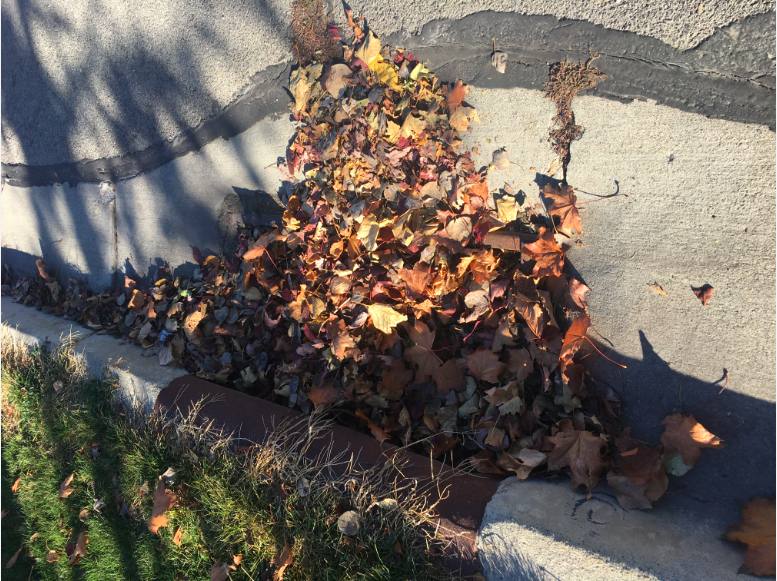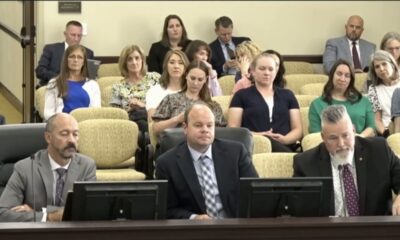Connect with us
Published
5 years agoon

In the Lehi City Council meeting held November 13, Council members approved the City’s newly created Storm Water Management Program. The program was a result of a federally mandated audit of Lehi City’s storm drain system.
The audit conducted January 16, 17, 2018, by Utah’s Department of Water Quality found that Lehi was in violation of discharging high amounts of contaminants into Utah Lake. Presently, Lehi City has 85 storm drain outfalls, 52 discharge into the Jordan River, 22 into Dry Creek, 5 into Spring Creek and 6 discharge directly into Utah Lake. Spring Creek and Dry Creek discharge into Utah Lake and Utah Lake discharges into the Jordan River.
The discharge contaminants were arsenic, cadmium, phosphorous, PCB in fish tissue and TDS (total dissolved solids). According to the City’s Water Management Plan, “Significant growth and development activities in the City created large areas of land being denuded and disturbed during construction activities. Many development activities increase the potential for sediment, debris, and other pollutants to be transported with stormwater runoff into storm drain facilities. Lehi City staff has identified sediment and nutrients as the major concern related to stormwater quality issues in the City.”
These contaminants, particularly phosphorous can lead to the growth of algal bloom in bodies of water. Over the past several years, algal bloom has been a chronic problem in Utah Lake during summer months.
According to Dave Norman, Lehi City Public Works Director, the City has been working to come into compliance since the audit of the City’s storm drain system. There are 12 areas of focus in the City’s plan. The City is required to implement an ordinance or other enforceable mechanisms to control erosion and sediment at construction sites greater than or equal to one acre or less than one acre if part of a larger Common Plan of Development. Norman said, “There are higher levels of potential contaminants in sites in Traverse Mountain and around lakes and rivers.”
Norman further explained, “We insist that contractors put black fabric fencing with straw bales in construction areas.” These measures help keep contaminants out of storm drains. There are SWPPP (storm water pollution prevention plan) signs at building sites throughout Lehi designating where these prevention practices are being implemented.
Norman also said, “There must be public outreach. Citizens need to be informed about what they can do to help mitigate the problem. Storm drains need to be cleaned of leaves and other kinds of debris. We need help to look for storm drain boxes that are clogged.”
Lehi Mayor Mark Johnson added, “It has become critical that we all become conscientious about protecting our environment. Having an appreciation that we all live upstream will guide us with our behaviors in how we protect our stormwater systems. Safeguarding our waterways is extremely important.”
According to the audit, significant money and other penalties will be assessed by Utah’s Department of Water Quality if Lehi City does not comply with the required improvements. The City has until December 31, 2018, to complete the Storm Water Management Plan.
Lehi City asks for help in keeping debris out of storm drains
When too many leaves get into the gutters and clog the drain inlets, rain water gets backed up and can cause standing water that damages roadways, creates a driving hazard, and may flood adjacent properties. The City has full-time crews doing their best to keep the gutters and storm drains clear of leaves and debris, but we cannot keep up with all of the trees dropping their leaves this time of year.
What can you do to help? You can help by keeping leaves and debris from your yard out of the street and away from the storm drains. If you notice leaves or other debris clogging the drains, please take a few minutes to clear them. When the leaves and all their decomposing bits wash down the street and into the storm drain, they make their way into rivers and lakes where the nutrients will feed unwanted algae growth next summer. In addition to a major “ick” factor, algae is a problem because when it dies and decomposes at the bottom of the lake, it uses up oxygen that fish and native plants need.
While the leaves are a problem for the gutters and drains, they can be a benefit for your yard. You can mow over dry leaves on your lawn using a mulching blade and leave them in place to provide nutrients for your lawn. They can be spread over your garden and flower beds and tilled in to decompose and restock the soil with nutrients and organic matter which will provide a healthier soil for your flowers and vegetables next year. You can also rake up and bag the leaves to prevent them from clogging the storm drains.
Sincerely,
Lehi City



Lehi Heritage Day celebration a “roaring” success


ASD slammed by Utah legislative committee for school closure process; board and superintendent subpoenaed for questioning


Lehi wrestlers win at Stansbury


Local food pantry enlists neighbors in battle against hunger


Candidates for Lehi City Council Discuss Positions at Debate


Restaurant review: Padeli’s Street Greek brings sensational Greek flavors to Lehi


LHS rebuild: What’s for lunch?


City Council approves revised Dixon Mink Farm, Ivory project


Skyridge Softball wins against Timp and Enterprise, Loses to Springville


ASD Accent on Excellence awards presented
